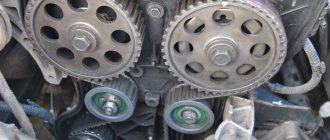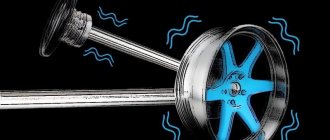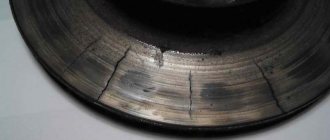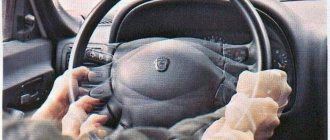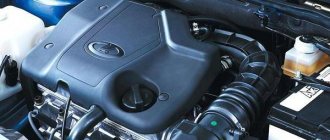Today, not a single car can do without power steering (power steering), the equipment of which was carried out with a focus on the modern level of driving comfort. The hydraulic mechanism facilitates physical control of the machine while maintaining optimal feedback and compliance with safety requirements.
This is achieved by introducing an auxiliary mechanism into the steering wheel system, the technical condition of which must be regularly monitored. If, after a certain time of using a machine with such equipment, deviations in the operation of the mechanism are noticed, then you should prepare for its repair. For example, if the power steering is hard to turn, there may be several options to resolve the situation. But first you should consider the design of the mechanism and the principle of its operation.
How does power steering work?
The hydraulic booster system is multi-component, but closed. This device is partly responsible for the difficulty of repairing the structure. A typical mechanism includes a pump, a reservoir with liquid in the form of a tank, a pressure regulator, a power unit and a spool. The pump is connected to the drive system of the machine’s engine, and the pressure regulator ensures that the force flow is balanced relative to the spool. The operating pressure difference depends on the supply of control fluid.
It is this part of the functionality that in most cases leads to problems that require power steering repair in the form of correcting the position of individual parts of the structure or by updating the oil. In turn, the hydraulic cylinder interacts with the steering rack, transmitting additional force. In order for the final load required to activate the steering wheel to be balanced, the spool itself is installed on the column - in the future it will react to the torque when the driver performs manipulations.
Drive belt
If the steering wheel in a car begins to rotate tightly, not sharply, but gradually over a month or more, then the cause of this trouble is the slipping of the drive belt and, as a result, the power steering pump not performing its functions.
To diagnose this malfunction, it is necessary to visually inspect the belt with the car turned off and running.
When inspecting the car with the car turned off, it is necessary to check the belt tension, the absence of oil leaks, cracks, wear and unevenness. When the engine is running, there should be no whistling or slipping from the power steering pump drive belt.
If the belt wears out too quickly, you need to pay attention to the condition of the pump. With the drive belt removed, you must rotate the pulley by hand. Rotation should be easy and smooth without jamming.
What are the signs that indicate a problem?
The feeling of heaviness when steering the steering wheel does not always appear suddenly and at once. This can be a long process, during which warning signs may arise. In particular, initial diagnostics will help detect problems due to the formation of leaks, noise and excessive vibrations. Over time, a tight steering wheel will be added to this list if the same leak is not stopped and the fluid supply is replenished. Of course, the above signs may also indicate the appearance of other problems, and not only with the hydraulic booster. Therefore, general diagnostics in this case will not be superfluous. It will also allow you to more accurately determine the possible cause of the weighting of the steering wheel.
Is it possible to continue driving if the steering wheel is hard to turn?
The hydraulic booster is responsible not only for making the steering wheel easier to turn, but also allows you to better control the direction of movement of the car. It is he who will not allow her to leave the road if the tire suddenly starts to go flat. It also partially compensates for shocks when overcoming various obstacles, which also makes driving easier. If the power steering fails, this means that during a dangerous situation on the road and in poor driving conditions, the risk of getting into an accident will be much higher. Not to mention that by continuing to forcefully turn the steering wheel, you will continue to increase damage to the steering system, the repair of which is already not cheap at all. Therefore, the best solution would be to immediately take the car to a service center or figure out the problem with the steering wheel yourself, if you have enough experience.
The main reasons for a tight steering wheel
There are many factors that can lead to difficulty steering due to power steering. Each of them involves its own approach to repair. One of the most common reasons is the presence of air in the niches of the hydraulic booster. Its presence not only eliminates the main function of the mechanism, but also has the opposite effect, making the movements of the steering wheel heavier.
Another common reason is the aforementioned emptying of the expansion tank with liquid. If it was not possible to determine the reason why the power steering is difficult to turn, then it makes sense to turn to the technical condition of the individual components of the system. For example, wear of parts, especially the drive belt, could indirectly provoke a decrease in hydraulic function. In this case, a complete revision of the mechanism and, possibly, its replacement cannot be avoided. The possibility of a problem with the steering wheel itself should not be ruled out. For example, a rack connected to a gearbox can cause even more trouble in terms of repairs.
Steering rack
It is an integral part of the car's steering. It is to facilitate the movement of its elements, as well as steering rods, that power steering, electric power steering and other types of amplifiers were developed. The latter may or may not be installed on the machine.
In the latter case, the car is controlled only due to the driver’s physical impact on the steering wheel with the subsequent conversion of the rotational moment into the translational movement of the steering rods.
This transformation is carried out due to the gear rack, precisely because of the constriction of which it becomes difficult to turn the steering wheel.
The problem is easily solved by loosening the adjusting bolt, which is present on almost all steering racks or steering gears, such as, for example, in the VAZ 2105.
Let's look at specific examples.
VAZ 2105, 2106, 2107
The first thing you need to look at when on a VAZ 2105, 2106, 2107 and other cars from this model range, the steering wheel begins to turn tightly, especially with the front wheels hanging, is the steering gearbox (column).
By external inspection, make sure that there is no oil leakage through the seals in the unit. Check the transmission oil level in the gearbox through the filler (control) plug. Make sure the steering column is adjusted correctly and is not pinched.
The second thing to do is check the condition of the ball joints. There are four of them, two on each side, top and bottom. If they are worn out and there is play in them, then this can also affect the increase in effort to rotate the steering wheel.
Next, check to see if one or both ball joints are jammed. To do this, disconnect the steering tips from the column. This is done so that the steering knuckle can be rotated freely.
If it rotates heavily with a knocking noise, the ball joints are jammed and will have to be replaced.
Next, check the left and right pendulum arms for wedging; to do this, disconnect the steering rods from them and move them by hand. They should walk freely, without grinding. Otherwise, replace them. For example, they can jam due to misalignment of the nylon bushings.
It’s better to immediately replace the pendulums on bushings with an analogue with ball bearings. You will immediately feel how easier the steering wheel begins to turn.
Also check the tie rod ends for play. If new tips were installed, then it will be difficult to drive the car for some time until they develop and become easy to move.
Angle of inclination of the stand (caster).
It would seem that this has something to do with the caster and the tight steering wheel. As a rule, the angle of the strut (positive or negative) is set by the manufacturer, and it does not change during wheel alignment.
But there are situations when on VAZ classics 2101 - 2107 at the service this indicator is changed, for example, from 0 (factory) to 1. This leads to the fact that the steering wheel begins to rotate harder, but at the same time it returns to the zero position faster after completion turn.
If you drive around the city more, then cluster 0 is more preferable, since the steering wheel rotates easier with it, but it does not return to its original position as quickly.
With cluster 1, the opposite happens: the steering wheel turns hard, but returns quickly. This cluster is preferred by drivers who travel more outside the city.
Body geometry.
Few people know about this, but on old VAZ classics it is possible to change the body geometry. For this reason, the casters are disrupted and the steering wheel begins to turn tightly.
To solve this problem, find two washers 4 mm thick and place them in the lower arms on both sides, but only in those places that are on the driver and passenger sides, and not on the radiator side.
Thanks to this, the lever will be located at an angle in relation to the beam. Next, do the wheel alignment, the steering wheel should turn easier.
VAZ 2109 and other models
The steering rack is installed here. As a result of wear of its internal parts and an increase in the gap between them, over time it begins to knock. This also applies to other cars with the same type of steering, VAZ 2110, 2114, 2115, Lada Priora, Kalina, Granta, etc. The last three models already come with an electric power steering system.
Using a special adjusting bolt, the gap between the drive gear and the rack is reduced and the knocking stops.
But if you tighten the bolt, a situation will arise when the steering wheel turns tightly. Therefore, it is important not to overdo it here.
And further. It is important to understand that the rack itself wears out the most in its central part (moving straight). There is less wear on the edges (when turning). Therefore, when adjusting, the central part of the rack is pressed normally, but the edges are pinched. As a result, if the car is moving straight, the steering wheel turns normally, but when turning it is tight.
For the same reason, if the car has power steering, the load on the pump increases when turning. It is transmitted through the pulley and belt to the engine, which “sags,” i.e. loses power.
The way out of the situation is to loosen the bolt a little or replace the rail.
Other reasons:
- Worn bearings on the upper shaft of the steering column;
- Seized strut support or bearing;
- There is no lubrication in the steering rack.
How to disassemble a tight steering wheel?
To verify the reasons why the steering wheel could become heavier, you should disassemble the mechanism. The event begins with disconnecting the pipelines that lead to the expansion tank and steering system. At this point, you can drain the liquid. Next, the drive belt from the pump is removed - again, if it is in an unusable condition, then you will have to put on a new belt.
Here, three blocks for fixing the pulley suitable for the pump unit are unscrewed. But depending on the type of fastening system, there may be more. After this, access to the fixing elements of the pump itself may open. As you can see, power steering repair can be performed already at this stage by replacing the fluid, updating the hoses and the drive belt. But this may not be enough. Special attention should be paid to the filter system. Even if it performs its function properly, a violation at the cleaning stage is possible, which cannot be determined in a garage environment. Therefore, if there are no other obvious causes of the problem, it makes sense to have the filters checked in a professional workshop.
Getting rid of excess air
If the reason is the presence of excess air in the system, then in a sense we can talk about luck. True, everything here is ambiguous. Most often, this problem is solved by several turns of the steering wheel, brought to the stop. Moreover, this action is performed in both directions. As practice shows, this allows you to push out excess air from the hydraulic communications. But if even after this action the steering wheel turns hard, then the tank is more likely to become airy. This means that the system works with liquid in which bubbles are present. This factor determines the lack of ease of use of the steering wheel. A complete renewal of the fluid in the expansion tank will help eliminate this problem.
Deviations in wheel alignment
Wheel alignment is responsible for ensuring that the wheels are at the correct angles relative to each other and the road. If the angles are incorrect, then we get the same large area of contact between the wheels and the road, which makes it difficult to turn the steering wheel, and this generally seriously undermines the stability of the car on the road. If the steering wheel has become harder to turn after you drove off-road, fell into a deep hole, hit a curb, or drove over a speed bump too quickly, then you should definitely be one of the first to check your wheel alignment.
Fluid replacement
To do this, it is not necessary to completely disassemble the mechanism. First of all, you should free the two pipes leading to the expansion tank from the clamps. Also, if necessary, additional fasteners and belt communications are removed, which make access to the tank difficult.
The fluid can be directly replaced without completely dismantling the tank. The spent mixture is simply pumped out, after which all that remains is to pour in new auto chemicals. However, if the power steering steering wheel turns tightly and has not been checked for a long time, then it is advisable to dismantle the reservoir for subsequent diagnostics. It should be checked for leaks, then thoroughly washed and rinsed with clean water. The dried tank is installed in its place, filled with new working fluid and secured with fasteners.
Wheel balancing is out of balance
Many people doubt whether wheel balancing is necessary in principle. It is necessary, since it is responsible for the uniform distribution of the mass of the wheel relative to its center. Its uneven distribution leads to rapid wear of tires, wheels and suspension, and also causes strong body vibration, which is clearly felt in the cabin. If the steering wheel shakes in your hands, then turning it and simply holding it in place will be extremely difficult. Therefore, if strong vibration occurs, it is worth balancing the wheels.
If you have electric power steering
If the steering wheel has become difficult to turn, then with a 99 percent probability repairs cannot be avoided. The most common problems with electric power steering involve a blown fuse or the motor burning out due to contact with moisture. A little less often, the problem lies in the failure of the steering wheel rotation sensor, and, of course, banal wear of parts should not be dismissed. In any case, to find out exactly and carry out repairs, you will need the help of a professional auto electrician.
If you have power steering
It, as already noted, has a more complex design, so in order to identify the cause of the malfunction, you will have to work hard.
Which liquid do you prefer?
The issue of choosing power steering fluid also imposes considerable responsibility. It is advisable to give preference to synthetic hydraulic mixtures made from high-quality components. Regular machine oil is not suitable in this case. Features of specialized compositions include a sufficient degree of fluidity, viscosity and the ability to work at extreme temperatures.
Often problems of this kind occur precisely in winter, when the filled liquid simply cannot cope with its tasks due to freezing. Therefore, the question of which oil should be poured into the power steering should only be decided in favor of special synthetic or semi-synthetic mixtures, which usually have a dark green tint. If we talk about manufacturers, high-quality auto chemicals of this type are produced by Motul, Castrol, Pentosin, Liqui Moly, etc. The cost of the liquid is about 800-1000 rubles, but even a small canister will last for a long time, so it’s not worth saving on this resource.
Problems with power steering fluid
Absolutely all fluids in a car are important for the normal operation of the mechanism for which they are intended. Power steering oil is no exception. Two big troubles can happen to him.
- The level has fallen below the minimum permissible value. If there is not enough power steering fluid, the steering wheel will become very difficult to turn, since in the worst case the power steering will stop performing its functions completely. Checking the oil level is easy - just look to see if it has dropped below the MIN mark in the reservoir. If this happens, you should not drive a car. Find another way to get to the nearest auto fluid store and buy oil, then go back and top it up. If you do not know what kind of fluid is poured into the power steering, you can find it out in one of the following sources:
- in technical documents for the car;
- on the oil reservoir cap;
- at dealerships.
- The liquid has become unusable. Over time, it loses its properties, so even if there is enough oil in the tank, this does not mean that everything is fine with it. Checking whether the liquid is still suitable for use is quite simple. In its normal state it is dark red in color. If it already looks more like dark burgundy (brown, crimson), and the oil itself is cloudy, then it’s time to change it. It is better to entrust this matter to specialists to avoid air jams.
You can also consult with sellers, since today the market offers a wide variety of analogues. After adding fluid, do not forget to check its level again after a while. Perhaps the tank has lost its seal and it is just constantly pouring out.
In general, during normal use of a car, it is necessary to change the power steering fluid once every two years with a mileage of up to 10 thousand km per year. If the car is used intensively - once a year or every 30 thousand km.
How to replace a heavy steering wheel?
Dismantling the system begins with the aforementioned disconnection of all pipelines, pipes and fasteners. It is also mandatory to drain or pump out the oil poured into the expansion tank. Installation of the new system is carried out in reverse order. If we are talking about a complete renovation of the steering complex, then in this case the rack itself will have to be dismantled. Such a replacement of the power steering must be carried out in conditions where there is an installation straightening stand. The installation begins with the integration of the steering wheel, and then the hydraulic components are integrated one by one. Lastly, the working fluid is filled in, and the communication elements are supplied.
